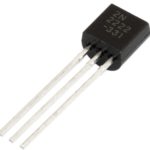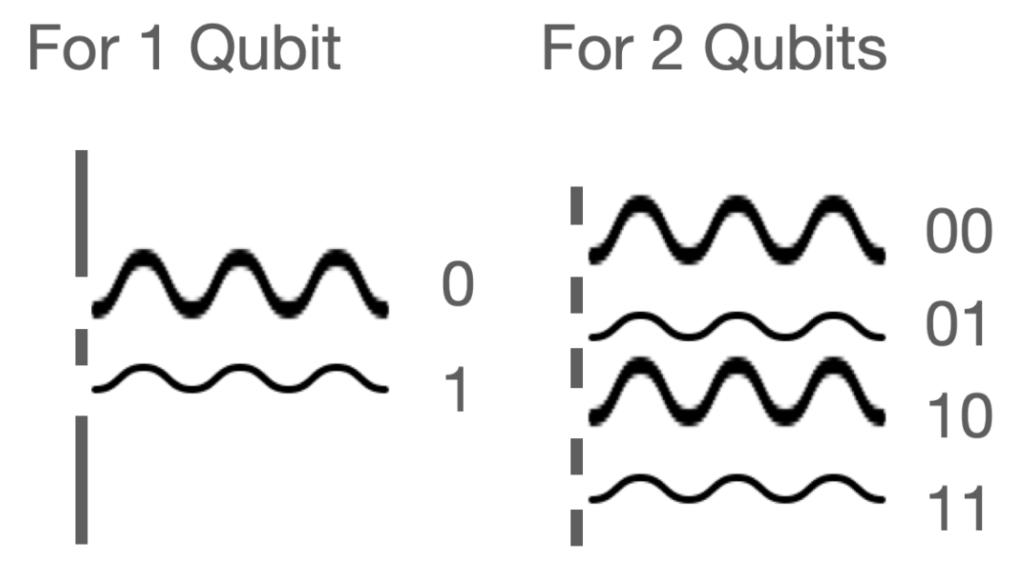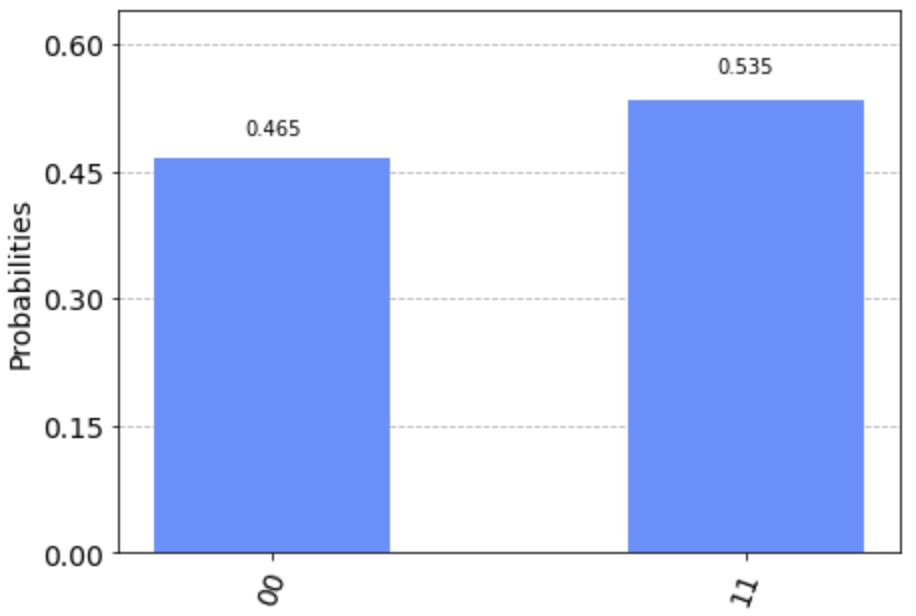This article is Part 2 of the series on quantum computing. If you would like to read Part 1, which introduces a high-level overview of the field, including the history, basic types and concepts, and the landscape for industrial use, please use the following link: Quantum Computers Part 1.
Introduction
Quantum computers provide a new way of representing information than classical computers that we see and use every day.
Classical computers represent and compute information using devices called transistors. Transistors are basically switches, and they can be on or off, or in computer terms, we call them bits, having the state of either 1 (on) or 0 (off). By combining these bits, we represent and compute information. Researchers have made transistors smaller and smaller to fit more into a smaller space to increase computational power. However, transistors are now reaching a size of about 7nm. For comparison, a silicon atom has a diameter of 0.5nm, which means transistors are almost on an atom scale. However, quantum physics takes effect when we reach the atom scale, and transistors fail to work as switches.


Therefore, to increase computational speed, we needed an alternative method altogether, and quantum computers provide this potential. Quantum computers use qubits instead of bits, which obey the laws of quantum physics. Qubits have the unique capability to represent both 0 and 1 simultaneously, a phenomenon called superposition. For example, if we had four qubits, there would be 16 combinations of 0s and 1s, but quantum computers can represent all of these combinations simultaneously, unlike classical computers. This different way of expressing information leads to another method and mechanism of computation. For some calculations, quantum computing holds an advantage over classical computing.
Therefore, this article aims to explain a quantum computer’s basic computational mechanism and introduce some calculations that quantum computing can speed up.
How does computation work for quantum computers?
Young's Double Slit Experiment
Quantum computers utilize principles of quantum mechanics for computation. Let us begin by looking into one of the most famous quantum mechanics experiments: Young’s double-slit experiment.
Initially, scientists thought light showed the behavior of either a wave or a particle. An experiment first conducted by a physicist named Young showed otherwise—that light exhibited both a wave and a particle’s behavior. Electrons were also shown to exhibit this property, which proved the wave-particle duality of both light and matter.
In this experiment, light or electrons are shot into a plate with two slits (see diagram). The screen behind the plate is observed to see what pattern is made. When we use electrons, each electron is observed to hit the screen at a particular point, which shows its nature as a particle. However, if we shoot electrons repeatedly and see the pattern on the screen, we see places where electrons are more likely to land than others. This orderly pattern is similar to wave interference—it strengthens and weakens alternately. It turns out that before electrons collide with the screen, electrons exhibit the properties of a wave. This concept of matter having properties of waves is used effectively in quantum computers.

Waves
Quantum states are represented as wave functions. As mentioned earlier, a qubit can be in a superposition state, having non-zero probabilities of becoming 0 and 1. For a one qubit system, the wave function often indicates the qubit’s probability of collapsing into 0 or 1. For a multi-qubit system, the wave function contains information about the probabilities of all possible combinations of values the qubits take. For example, if we had two qubits, there are four possible combinations (00, 01, 10, and 11). Here, the two qubits will have a wave function with waves representing each of these possible combinations. Well, what do these waves mean in quantum computers?
Properties of waves that are especially important in quantum computers are the amplitude and the phase. The amplitude of the wave expresses the probability of that event occurring. For example, if the wave corresponding to 0 has a larger amplitude than the wave for 1, then there is a higher possibility of attaining a 0. The phase is something that affects the interference of multiple waves. For example, in the double-slit experiment, if we shot electrons from a position closer to one of the slits, the waves would interfere with each other differently, thus affecting the resultant pattern. Based on these properties, we manipulate waves to make calculations, and we do this using quantum gates.

Quantum Gates
Gates are used in classical computers as well, and they are logic / tools for calculation. A classical computer has two key gates – the NOT gate and the AND gate.
- NOT gate: Given an input, the NOT gate outputs the flipped state of the input. If a bit with state 0 is processed through the NOT gate, the bit will flip to the state of 1 and vice versa.
- AND gate: Given two inputs, if both have a state of 1, then the AND gate outputs a 1.
A classical computer combines these two gates to make all computations they do now. A quantum computer has similar but slightly different gates.
- X-gate: The X gate is like the NOT gate and outputs the flipped state of the input.
- CNOT gate: Given two input qubits, if the one designated as the control bit has a state of 1, then the other designated as the target bit is flipped.
- H gate: The H gate puts a qubit into superposition, which means that it has an indefinite state of both 0 and 1.
By combining the H gate and the CNOT gate, we can create a state called entanglement. We put a qubit through the H gate to cause superposition. Designating this qubit as the control and another as the target, we use a CNOT gate. Here, we have generated a state where the target qubit’s state is dependent on the control qubit, which is uncertain until measurement.
We use the quantum gates described above and many others to manipulate the qubits’ waves (in other words, the quantum state). We usually represent the quantum state mathematically using vectors and linear algebra and visually on a Bloch sphere.
Bloch Sphere
As seen in the figure below, the Bloch sphere is a sphere with a radius of 1. The top of the sphere on the z-axis corresponds to 0, and the bottom corresponds to 1. For a classical computer, the states of the bit will be either one of these. However, a qubit can theoretically have the quantum state of anywhere on the surface of this sphere. Depending on the place on the surface, the qubit will have different probabilities of obtaining 0 or 1 in the calculation. Earlier, we mentioned that the X-gate is like the NOT gate and flips the qubit’s state from 0 to 1 or 1 to 0. On the Bloch sphere, this corresponds to a flip about the x-axis. The H gate was introduced as one that induces superposition. The H gate rotates the quantum state 90 degrees on the Bloch sphere, placing it on the x-axis with equal probabilities of obtaining a 0 or 1.
Next, let us talk about how to obtain the results of a given computation. We call this the measurement of the qubits.

Measurement
When we measure the qubits to find the computation results, we cannot obtain the qubits’ quantum state. When we measure the qubits, they will become either 0 or 1, and this is decided randomly depending on their probabilities. We want to find the probability of every possible outcome of the computation, but we cannot obtain the amplitudes and the quantum state of the qubits. Therefore, when we use a quantum computer to compute, we conduct the same calculation multiple times to see the probability of outcomes over numerous events. The photo below shows an example of a computation result. The probability of each possible outcome is observed over multiple trials.

What calculations are quantum computers suitable for?
Now that we have covered how computations for quantum computers work let us discuss some calculations suitable for quantum computers. Significant fields of application include chemistry, finance, and computational sciences.
- Chemistry: In chemistry, the behavior of the valence electrons determines the properties of the substance. Therefore, we would like to simulate electrons computationally. Electrons behave based on quantum mechanics, so a classical computer would have to record all patterns of amplitudes and phases of the superpositions. However, since quantum computers also use quantum mechanics, the qubits can directly represent electrons’ superposition and simulate efficiently.
- Finance: Quantum computers are good at solving optimization problems by narrowing down possible outcomes using gates and entanglement effectively. Optimization solutions are used in portfolio optimization, risk analysis, and security.
- Computational Sciences: Quantum computers can solve simultaneous linear equations faster because adding and subtracting equations is similar to adding and subtracting waves. Simultaneous linear equations are used in computer simulations, machine learning, and image processing.
In future articles, we will explore significant applications and some information about quantum computing hardware development.
[1] IBM. “IBM Quantum Experience”. https://quantum-computing.ibm.com/. Last Accessed: 2020/09/07.
[2] Qiskit. “Learn Quantum Computing using Qiskit”. https://qiskit.org/textbook/preface.html. Last Accessed: 2020/09/07.
[3] Yuichiro, Minato. “Friendliest Textbook on Quantum Computers (Title Translated)”. (2019).
[4] Shuntaro, Takeda. “Really Understanding Quantum Computers! (Title Translated)”. (2020).
[5][IMAGE] Shatrov, Alex. “The Transistor: Foundation of Modern Electronics”. https://medium.com/@alexshatrov/the-transistor-foundation-of-modern-electronics-1a7e99855035.
[6][IMAGE] Brochero, Betsy. “Representation of a four-qubit cluster in superposition”. https://www.researchgate.net/figure/Representation-of-a-four-qubit-cluster-in-superposition_fig1_333248280.
[7][IMAGE] Anton Paar. “Double slit experiment”. https://wiki.anton-paar.com/en/double-slit-experiment/.
[8][IMAGE] Smite-Meister. “Bloch sphere”. https://en.wikipedia.org/wiki/Bloch_sphere#/media/File:Bloch_sphere.svg.
